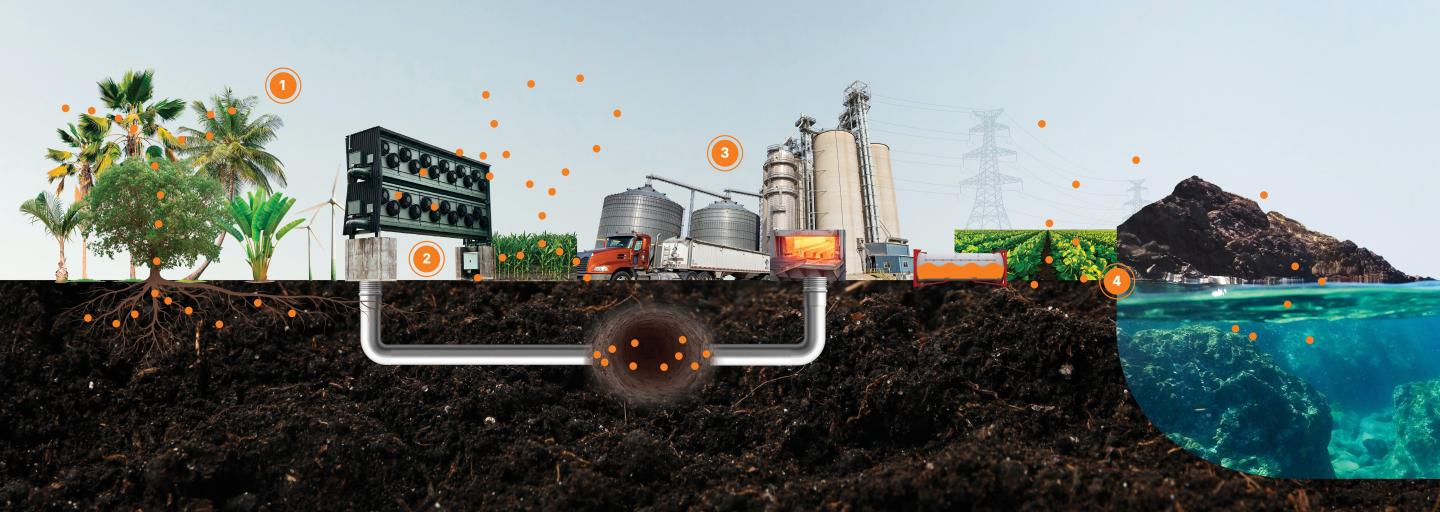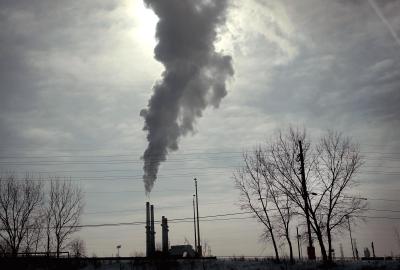
4 ways carbon capture can help fight climate change
Dramatically reducing greenhouse gas emissions is essential to slow global warming. But it's not enough.
According to the National Academies of Sciences, Engineering and Medicine, the world must also remove around an additional 10 gigatons of carbon dioxide from the atmosphere each year by mid-century. That’s twice what the U.S. emits from burning fossil fuels each year.
Capturing CO2 from the air and trapping it long-term is known as carbon dioxide removal or CDR.
Forests are one of the best carbon capture tools we have
One of the best CDR strategies has been around for millennia: trees. Photosynthesis pulls carbon dioxide out of the air, and locks it up in trunks, branches, leaves and roots as the tree grows. The world’s forests currently absorb around 16 gigatons of CO2 each year. But about half of that is lost to deforestation, fires and other disturbances. Ending deforestation, restoring cleared areas and allowing degraded forests to regenerate is a hugely effective, low-tech way to draw down CO2.
Can we do it? It is widely recognized that in order to halt deforestation the world's forests must be worth more alive than cut down. The international LEAF Coalition, a group of powerful countries and businesses, has made an ambitious start towards realizing that goal. LEAF has mobilized more than $1 billion in public and private money to stop deforestation and restore degraded tropical forests at the scale of whole countries or other large jurisdictions. Multiple forest countries have already signed up and many more are in line to participate. LEAF aims to channel tens of billions of dollars to halt all tropical deforestation by 2030.
Machines that suck carbon from the air
Direct air capture, or DAC, is the mechanical process of sucking large amounts of air through a chemical filter to remove the carbon dioxide. The CO2 may then be pumped deep underground. There are a handful of small DAC plants already operating in Europe and North America. Iceland's Orca plant for example, which opened in 2021, can draw down 4,000 tons of CO2 each year.
Is it enough? Short answer, no. We are going to need a lot more Orcas to make a difference. In fact, to hit net-zero emissions by 2050, the U.S. may need to vacuum up as much as 1,850 million tons of CO2 a year. Direct air capture is currently expensive and energy-intensive. Biden's infrastructure package sets aside $3.5 billion to create four DAC demonstration hubs around the country, each capable of drawing down at least 1 million tons each year. The Department of Energy also announced the Carbon Negative Shot, an initiative to drive down the price of CDR technologies like direct air capture to $100 per ton — approaching what polluters must pay for emitting CO2 in the E.U. Other policies can help too — from incentives to direct government procurement. There is a caveat: Critics of direct air capture point out that just capturing CO2 doesn't address other harmful pollutants that, for example, coal and gas power plants emit. Plus, the way the carbon is stored underground could also pose risks for nearby communities if not done responsibly.
Bioenergy with carbon capture
Bioenergy with carbon capture and storage, or BECCS, is the process of burning crops or agricultural residue for electricity or using them to produce biofuels, and sequestering the related emissions underground. It counts as CDR because crops draw down carbon dioxide as they grow and sequestration ensures it is never re-released. The National Academy of Sciences estimates that BECCS could sequester up to 5.2 gigatons of CO2 globally every year without large adverse impacts on food security or biodiversity.
What's the catch? The math only works out if the emissions from growing, harvesting, transporting and processing the biomass don’t outweigh the carbon sequestered. And it's very early days. Currently, there is only one large-scale operational BECCS facility in the United States that actually stores the carbon it captures, rather than finding commercial uses for the gas. The food processing company Archer Daniels Midland operates a commercial BECCS facility in Decatur, Illinois, that locks around 519,000 tons of CO2 underground every year. That’s only about half what the company originally aimed to sequester annually.
In the north of England, the Drax power plant aims to become by far the largest BECCS facility in the world, with the capacity to store 8 million tons of CO2 under the North Sea every year as soon as 2027. But the pilot project is beset with controversy.
If BECCS is to play a significant role in drawing down atmospheric CO2, we will need dedicated BECCS incentives and policies to encourage the market to scale quickly and, crucially, responsibly.
Carbon stored in land and oceans
The world's soils and oceans are already massive carbon stores. But could they do more? EDF scientists are investigating the carbon capture potential of cultivating seaweeds in the open ocean and restoring mangroves and salt marshes. They're also examining how agricultural practices such as reduced tilling and use of cover crops impact the amount of carbon stored in farmland. Scientists estimate that agricultural soils could remove 4-6% of annual U.S. emissions.
What are we waiting for? There are multiple ecological benefits to restoring nature and improving soil health. But much more research is needed to establish which pathways in oceans and farmlands might be the most effective at capturing and storing carbon at the scale we need. “It’s just too soon to say whether these approaches will make a real dent in greenhouse gasses,” says EDF lead senior scientist Doria Gordon. “But we're working hard to find out.”


